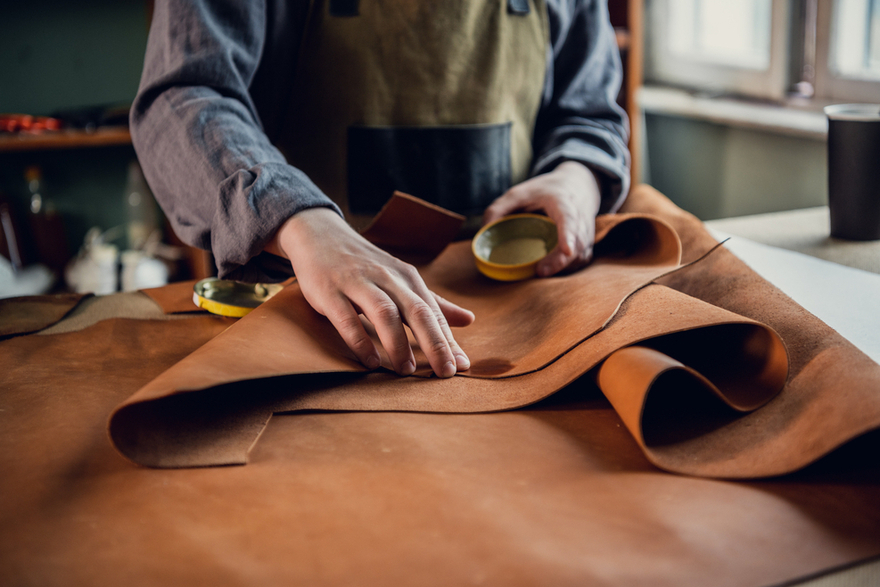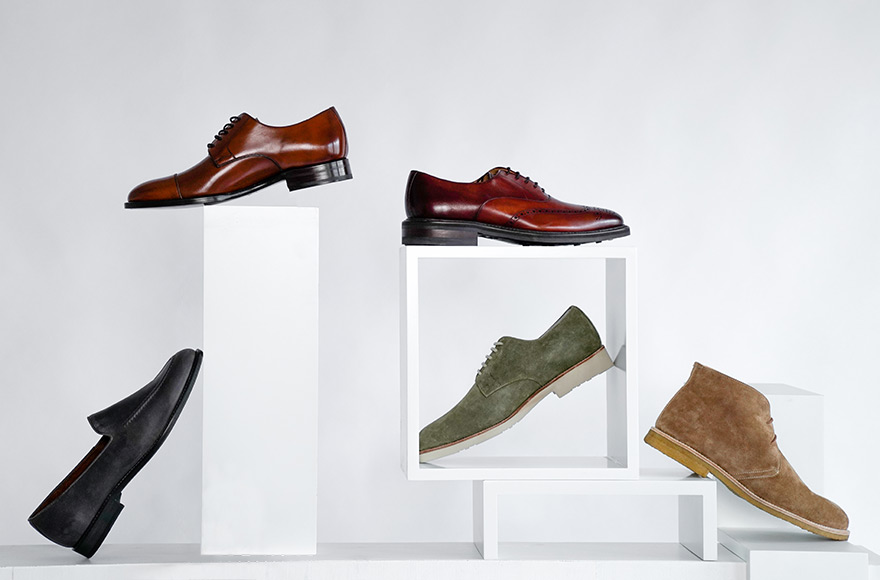
Procuring leather is a centuries-old process, at the end of which raw animal hides serve as a premium raw material for making good men's shoes.

About 70 percent of the Leder that is processed in shoe factories has been taken from large livestock skins. The grand majority of it is produced as a by-product of the food industry. In other words, the cows it comes from are primarily used for their meat. Their skins are simply a by-product. This is extremely important from an environmental perspective, since it means nothing else than in most cases, no animals are bred purely for the later processing of their skins. However, this is unfortunately not the case when it comes to exotic types of leather.
For making shoes, only the skins of a small number of animals are considered
Für die Herstellung von quality men's shoes, only the skins of a small number of animals are brought into consideration. The most popular choices are the coats and skins of the calf (Box Calf for lining leather and uppers of basic street shoes), cows (cowhide, leather soles and uppers for sturdy shoes), horse (higher-priced uppers, Cordovan), from the goat (Chevreau, upper leather and lining leather), from the pig (Peccary, upper leather), from the ostrich (upper leather) and from the crocodile (upper leather).
The beginning of the three-step process, at the end of which quality leather is produced, is fleshing, or the detachment of the dermis from the other two leather layers in the beamhouse. Next, the raw leather is created with the actual tanning, before finally the finished leather is obtained during the finishing process.
Even the highest-quality raw animal hide is worthless, though, when it has not been previously subjected to perfect hand-processing to be made into first-rate leather.
A further stage of finishing that is undertaken before drying is the preparation of a glaze for the leather that will be used to make the shaft of the shoe. This involves lacquering the upper layer of the leather to a certain degree. This glaze protects the leather from outside influences and preserves the shininess of the surface.
The finished upper leather is fixed between metal plates or under heat radiators and dried at 40 to 60 degrees Celsius. After a 1 to 2 days of temporary storage a heavy hand-held iron or a press at 90 degrees is used to iron out the leather. A flawless commodity has now been created from the raw hides.
Additional steps in leather production
Handmade leather Shoes at Shoepassion.com
Classic Style Shoes for men & women ★ Various styles & designs ★ High quality ★ Fair & sustainably produced in Europe ★ Exellent value for money ★ Many models on sale














